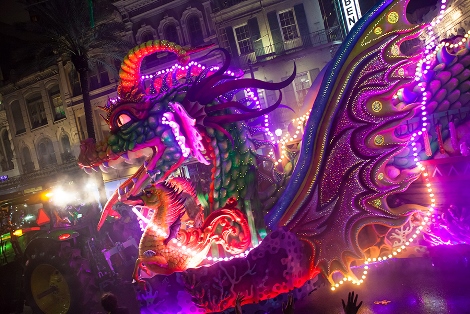
While most of the country is trudging through the last weeks of winter, New Orleans' Carnival season is in full swing, with Mardi Gras just around the corner. Music, lights and beads abound as spectators converge to collect throws from the "krewes," the social clubs that organize and put on parades throughout the season.
Creating a spectacular show year after year requires a lot of hard work, however, especially when each krewe is trying to outdo generations of performances.
That's why they turn to Kern Studios.
Let the good times roll
Kern Studios perfectly embodies the larger-than-life persona of Mardi Gras: A creative spirit. A passion for innovation. And a dedication to the New Orleans community. That's why a father-son team of local artists, Roy and Blaine Kern, was able to build its business from a mule-drawn garbage wagon in 1932 to become the city's leading parade designer and builder, now masterminding 450 floats each year.
While pretty much everything but the floats' chassis has changed since the Kerns officially founded the business in 1947, their contributions to American float-building can still be seen today. Blaine Kern studied under the world's leading float- and costume-makers, drawing on their influence to elevate the level of extravagance in U.S. parades. His involvement in the formation of iconic parades even earned him the title of "Mr. Mardi Gras."
Today, his son, Barry Kern, continues the family's legacy by studying artists and designers, and growing the business. Kern Studios is a leading maker of parades, floats, props, sculptures, billboards and themed outdoor and indoor environments worldwide, having worked on projects for many big brands, including Walt Disney World, Universal Studios, Nickelodeon, Chick-Fil-A, Coca-Cola, Six Flags, the NBA and the NFL.
The nuts and bolts of floats
According to longtime Kern Studios employee Chris Richier, float designs have changed dramatically since he started working for the company in 1976.
"Floats have changed a lot," Richier says. "They used to be little single-deck floats where people would ride on one level. Now, they're nine-section, multi-level, 50-ton capacity floats, and each runs off a generator at 25-30 kW."
After finalizing the concept and design of each float, the team builds the chassis and metal frame that will hold and transport the finished product. Then, construction begins. Robots and artists work together to cut and shape massive Styrofoam pieces, then electricians and other tradespeople come in to run wire and hook up all the necessities.
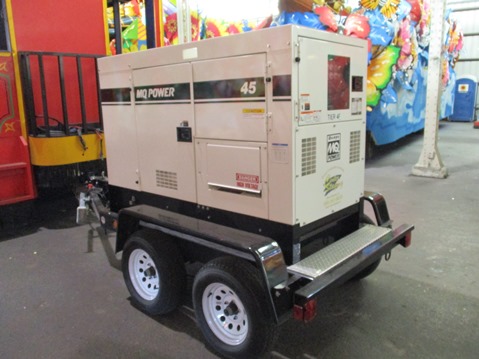 Kern Studios was spared from the flooding that devastated New Orleans after Hurricane Katrina, and, thanks to the generators attached to each float tractor, it was one of the few places to have power. The 82nd Airborne, Red Cross and Salvation Army all eventually used Kern Studios as a base to provide aid.
Kern Studios was spared from the flooding that devastated New Orleans after Hurricane Katrina, and, thanks to the generators attached to each float tractor, it was one of the few places to have power. The 82nd Airborne, Red Cross and Salvation Army all eventually used Kern Studios as a base to provide aid.
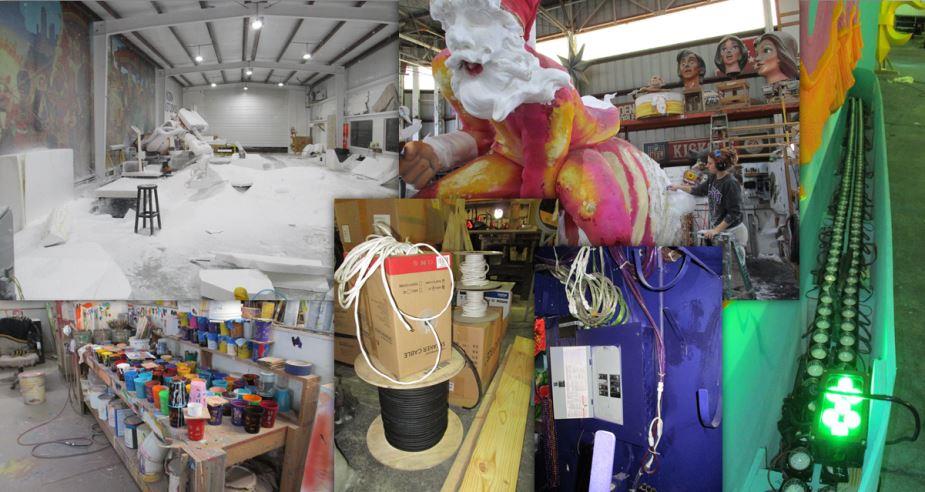 Many components help floats take shape at Kern Studios.
Many components help floats take shape at Kern Studios.
"These floats have LED lighting, fiber optic lighting – it's like a house," Richier says. "There are bathrooms on these floats, sometimes there's a bar on these floats. They have basic wiring, outlets, sockets, and some different things, like sound systems."
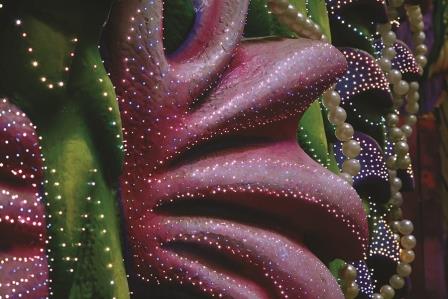 Fiber optic lighting gives special dimension to float details.
Fiber optic lighting gives special dimension to float details.
Once the floats are wired up, the artists spend hours painting and finessing all the details that make the lighting and design wow spectators during the parades.
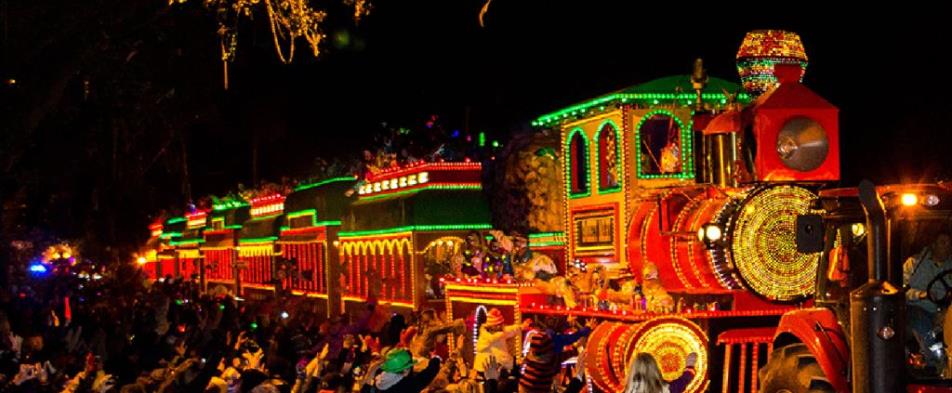 Partiers throughout America flock to New Orleans to celebrate Mardi Gras and feast their eyes on the iconic floats that Kern Studios designs.
Partiers throughout America flock to New Orleans to celebrate Mardi Gras and feast their eyes on the iconic floats that Kern Studios designs.
Kern Studios was the first stop in our series to showcase the always impressive – and sometimes usual – work that Klein-equipped professionals perform across the country.
